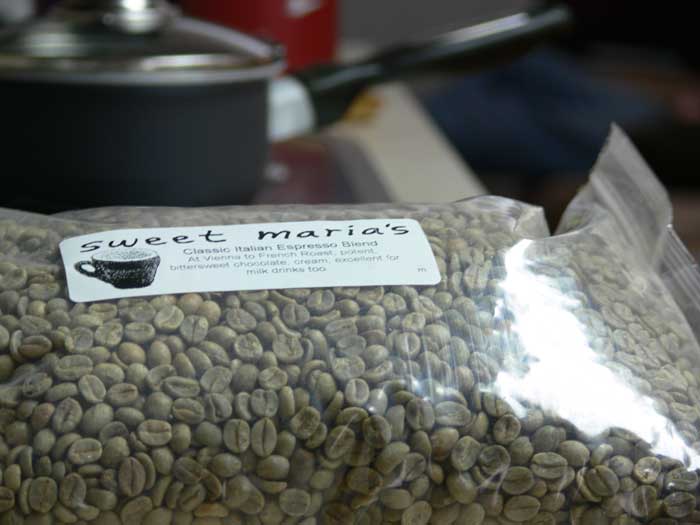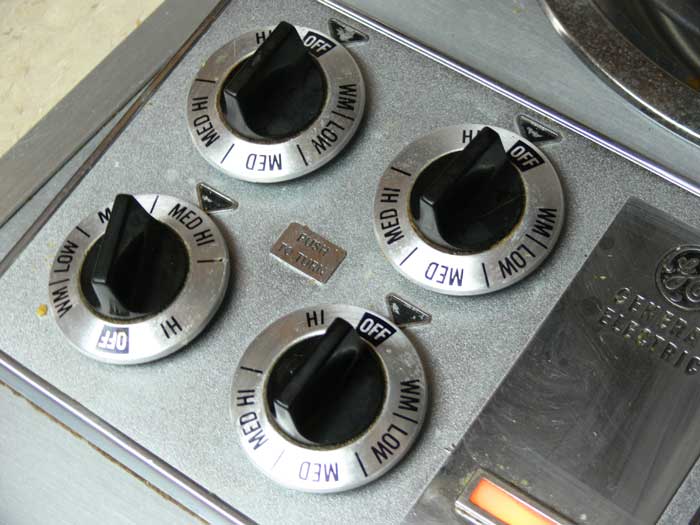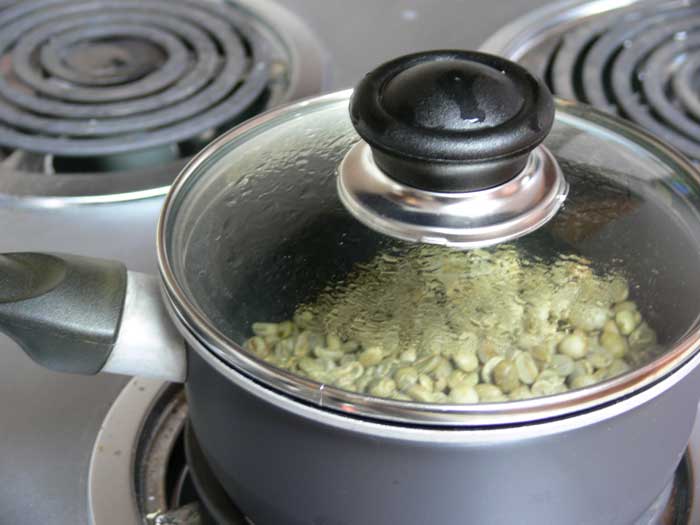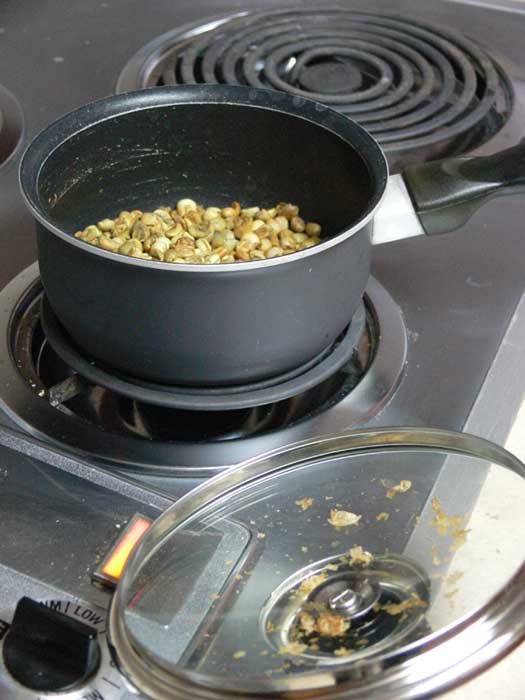
Simple Pan Roasting Coffee
Ever since I had the pleasure of performing rudimentary data entry for the local library, I have been a coffee drinker. Initially, I would consume coffee in order to stave off the ever present threat of falling asleep while at work, but as my tastes have evolved so has my appreciation for coffee.
Before I knew it, I no longer thought of coffee as a dark bitter sludge to be used as a tool of sustainability, but more as a succulent delicacy that I should limit to once per day. During the time that I was acquiring the taste of black coffee, it didn't help to be teased by gourmet shops offering mocha's, latte's and everything in between.
After comparing the quality offered by a coffee house to my own store boughten brew, I would almost always end up depressed. Why must my boughten coffee develop a burnt, stale taste after only a week? I certainly am not interested in paying $3 - $5 for a gourmet cup each day.
I also am not interested in buying a months worth of stock that will only taste good for a week. So how do we overcome this perplexing conundrum?
Why, we roast and grind our own coffee!
Despite what you have probably seen on many coffee sites or television, roasting your own coffee is actually quite simple and doesn't require any special tools. There are only two uncommon items that you will need in order to taste the best coffee each and every day. The first is a coffee grinder, which can be picked up in local department store for twenty dollars or less. The second is un-roasted or green coffee beans. These can either be picked up from a local shop (if you live in a large city), or ordered online. I have always ordered my beans from Sweet Maria's.
Manifesto of Supplies
1. Green Coffee Beans2. Small Pot with a lid
3. Container to Place roasted beans in (I use an empty margarine container)
4. Coffee Grinder
5. Place to put coffee shucks (these flake off while roasting)
In order to roast our coffee, we will simply be cooking it in a pan on the stove top. I like to use a small pan because it is easier to shake the beans around, and I have also noticed that I get a more even roast than with larger cook ware.
Step 1 - Degree of Roast
The first thing you need to do is decide what degree of roast you want, this will determine how long you cook the beans. You can refer to Sweet Maria's great pictorial charts in order to determine what your roast will look like when it is done. I normally roast what I believe to be a weeks worth of coffee each batch. This way, I am sure that I will always have extremely fresh coffee. Depending on if you use an espresso machine or traditional drip brewer, the amount of beans you roast for a week will surely vary. I reccomend to start with 1 cup. The easiest thing to do is experiment.Step 2 - Starting the Roast
Lets put a weeks worth of beans into the pan and turn the burner up to medium-high. Place the lid on the pot. I like to start off at this temperature, because it will get the beans up to cooking temperature rapidly.Step 3 - Moisture
Once you see a ring of moisture start to form around the lid, turn the heat down to medium. If you don't have a clear lid, you can check by periodically taking the lid off. You'll want to make sure that you shake the pan around so that the beans are periodically moved and don't become burnt. It is normal for moisture to be emitted from the beans as you roast them.Step 4 - Agitation
After you have reduced the heat to medium, the most important aspect until we are done roasting, is the shaking of the pan to agitate the beans. I normally shake the pan around, then place it back on the burner every three minutes or so. Just hold the lid on tight, and shake the whole pan. It is normal for the beans to give off a popcorn like smell and also smoke a little bit.Step 5 - Shucks
After the beans have been roasting for a while, you should start to notice small shucks collecting inside the pan. An easy way of getting rid of the shucks is to take the lid off of the pan and blow them out. I like to take the whole pot off of the stove, stand over the sink, and blow them out. This makes for easy clean up when you are done. If you don't have a garbage disposal built in to your sink, another easy way would be to blow them right into your kitchen trash can.Step 6 - Post Roast
As you continue to constantly agitate the pan and blow the shucks out, all thats left to do is cook the beans until they reach your desired degree of roast. You should stop roasting the beans a little bit before you think they are done. They will hold their internal temperature and continue roasting for several minutes after you remove them from the heat.Step 7 - Storage
You can just leave the beans in the pot on the stove to cool off. It normally takes the coffee 20 minutes to a half hour before the temperature has dropped enough that you can pour the roasted beans into the storage container. Make sure to leave the container unsealed for 12 hours. Experts say this is to allow the CO2 to vent from the beans. I have always followed this advice. As you let the beans vent, you will notice that they will take on that familiar roasted coffee smell.Step 8 - Enjoy!
Grind your beans and enjoy the highest quality coffee you have ever had! I usually brew my coffee one cup at a time using an espresso machine. However, I have taken my roast into work and received rave reviews using the standard coffee brewer. Making coffee this way has definitely been a rewarding and flavorful experience for me. I doubt I will ever go back!Comments

Thanks for the helpful comments t. At the time I made this I was just getting started with roasting. I now use an air based roaster because using this method would normally take at least an hour.
You are right in that many of the pan roasts I did weren't perfect, but they helped introduce me to the craft a little more.

The roast looks uneven, but its a start. it looked as though some of the beans were definitely roasted dark, while others seemed to be still too light to consider a full roast. Pan roasting coffee has its faults as its easy to scorch the beans on the hot pan compared to the preferred method of using air to heat up the beans. one suggestion would be to aggitate the beans more or keep the heat at a lower tempertature, unless time was of importance. although your coffee may not be perfection its sure to have its unique qualities.
-t

Great tutorial with good info. Congrats! Drink your roasted coffee within 2 weeks (MAXIMUM) for best flavor, after that the volatile oils in the beans begin to dissipate, and you get the flavor of stale coffee. As for the grinders, I would like to add one addendum. It is best to get a burr grinder. If your grinder has a whirly blade inside it that spins when you press a button, it isn't a burr grinder. Most burr grinders have a hopper for beans- only put as many beans in the hopper as it takes for one pot. A decent burr grinder will run you about 40 bucks from cuisinart, which is available at some Sam's Club stores. One more note: Coffee is 98% water. Use filtered or bottled water, because good water is essential to good coffee. Happy coffee drinking! ~Robert Ernst, Roastmaster for Jackson Coffee Co.
Comments are currently disabled.








